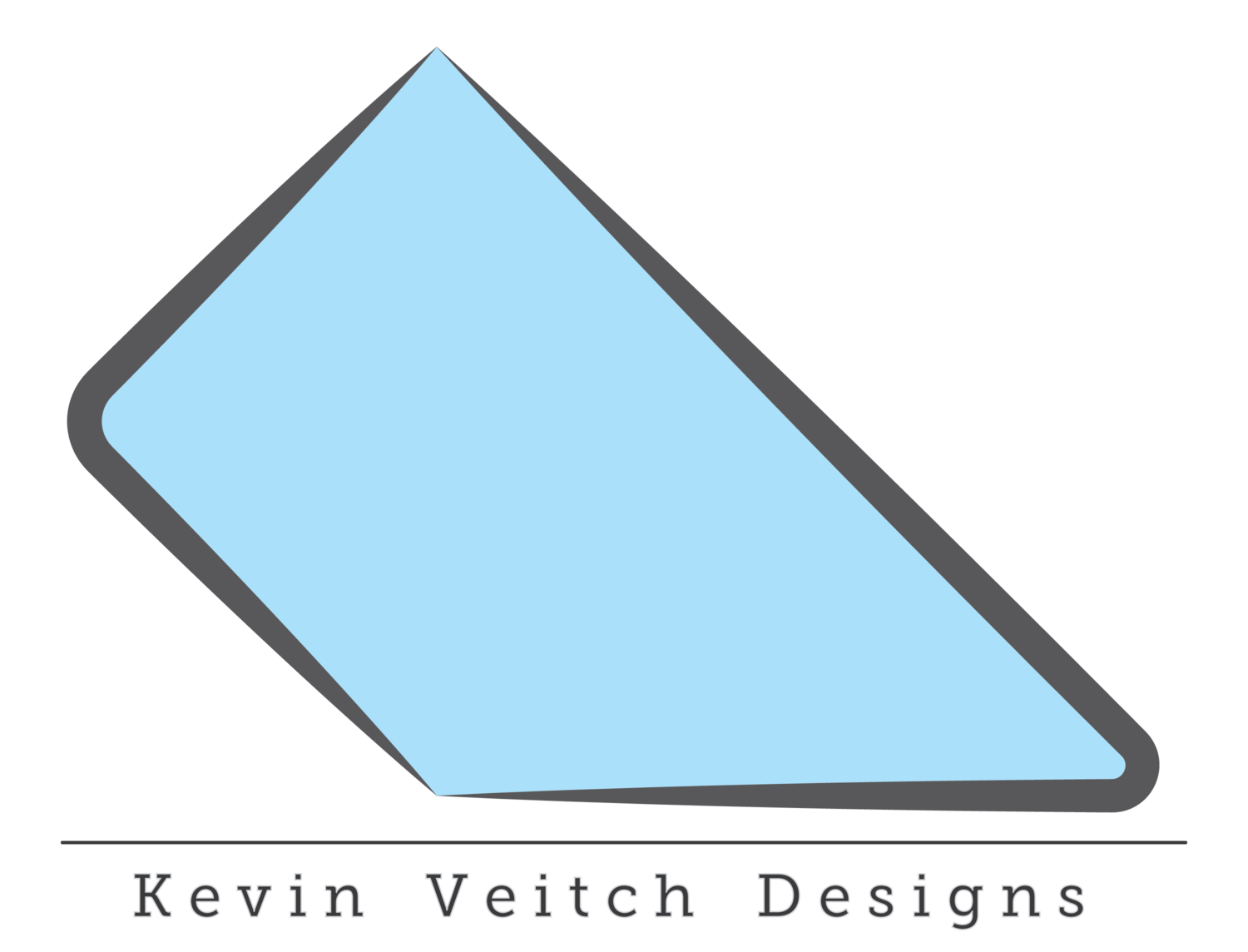


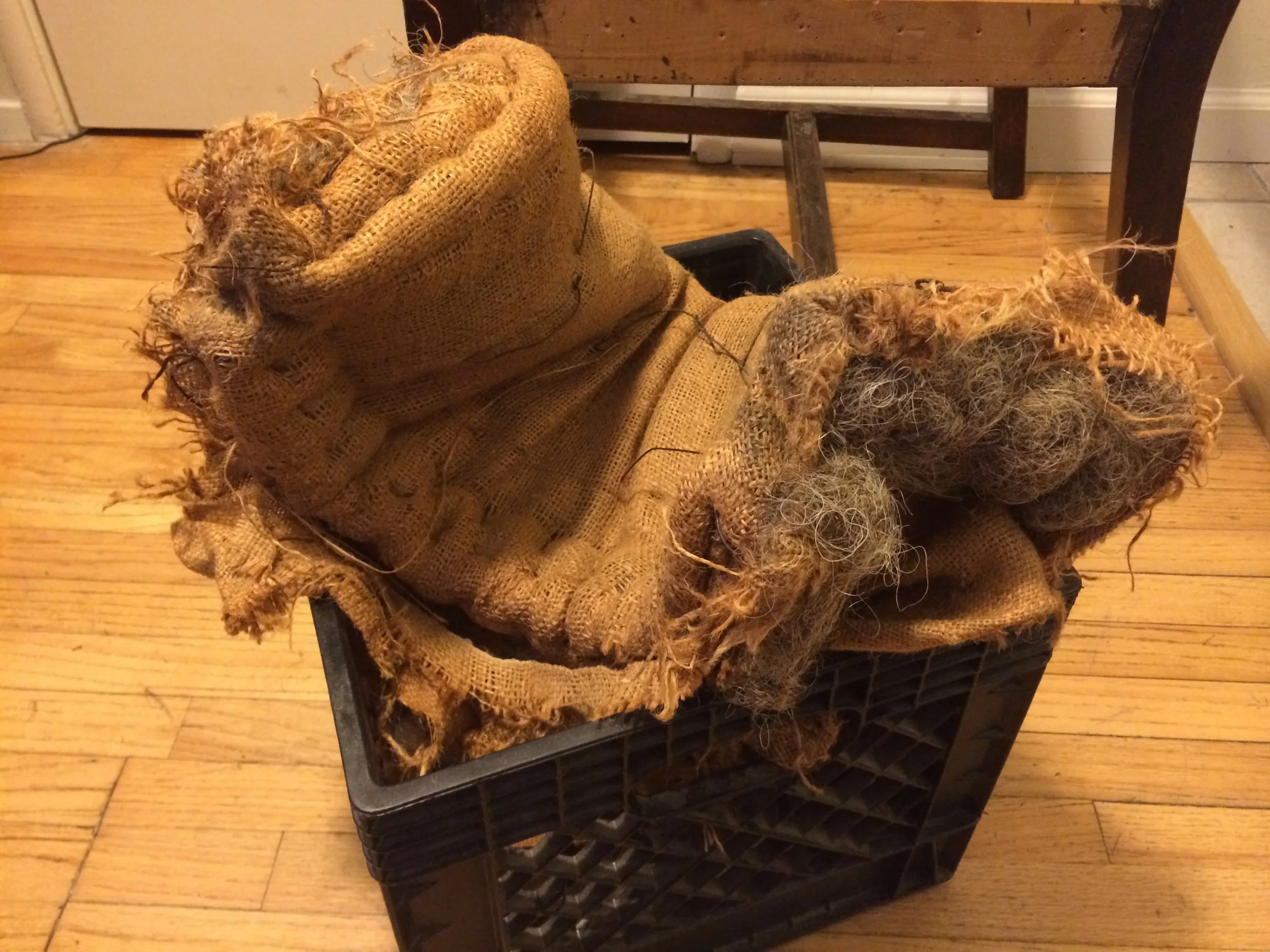
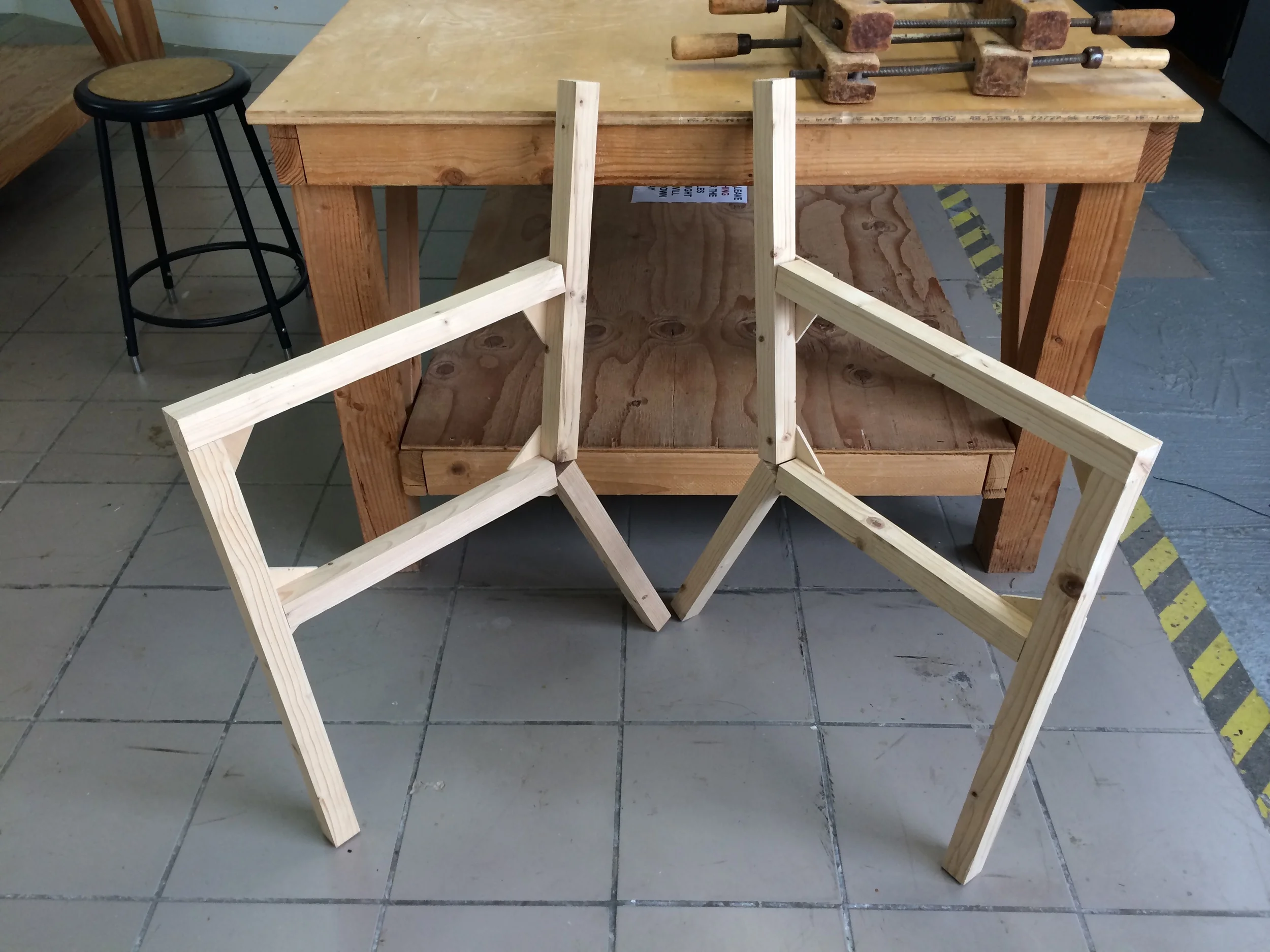

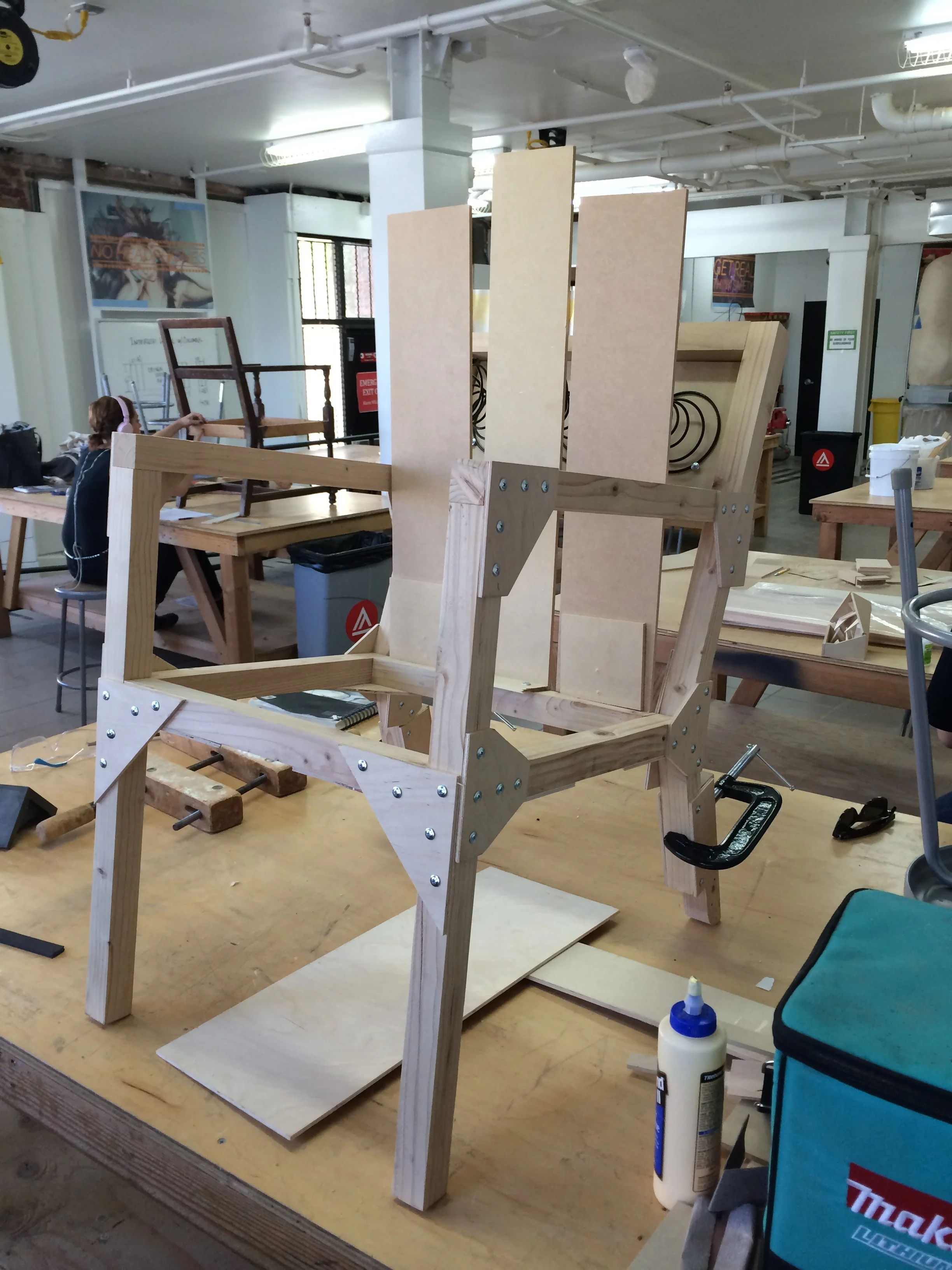




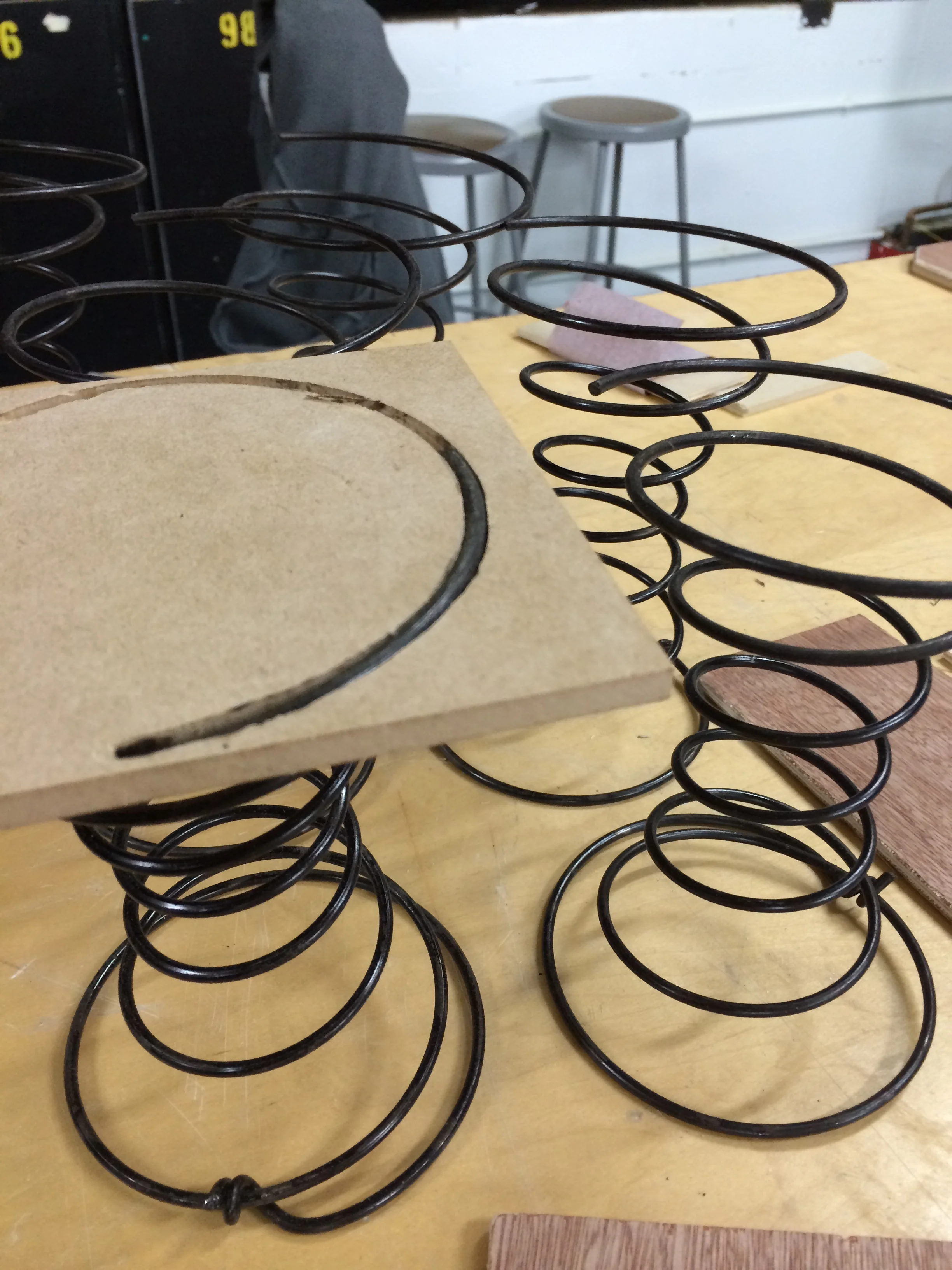

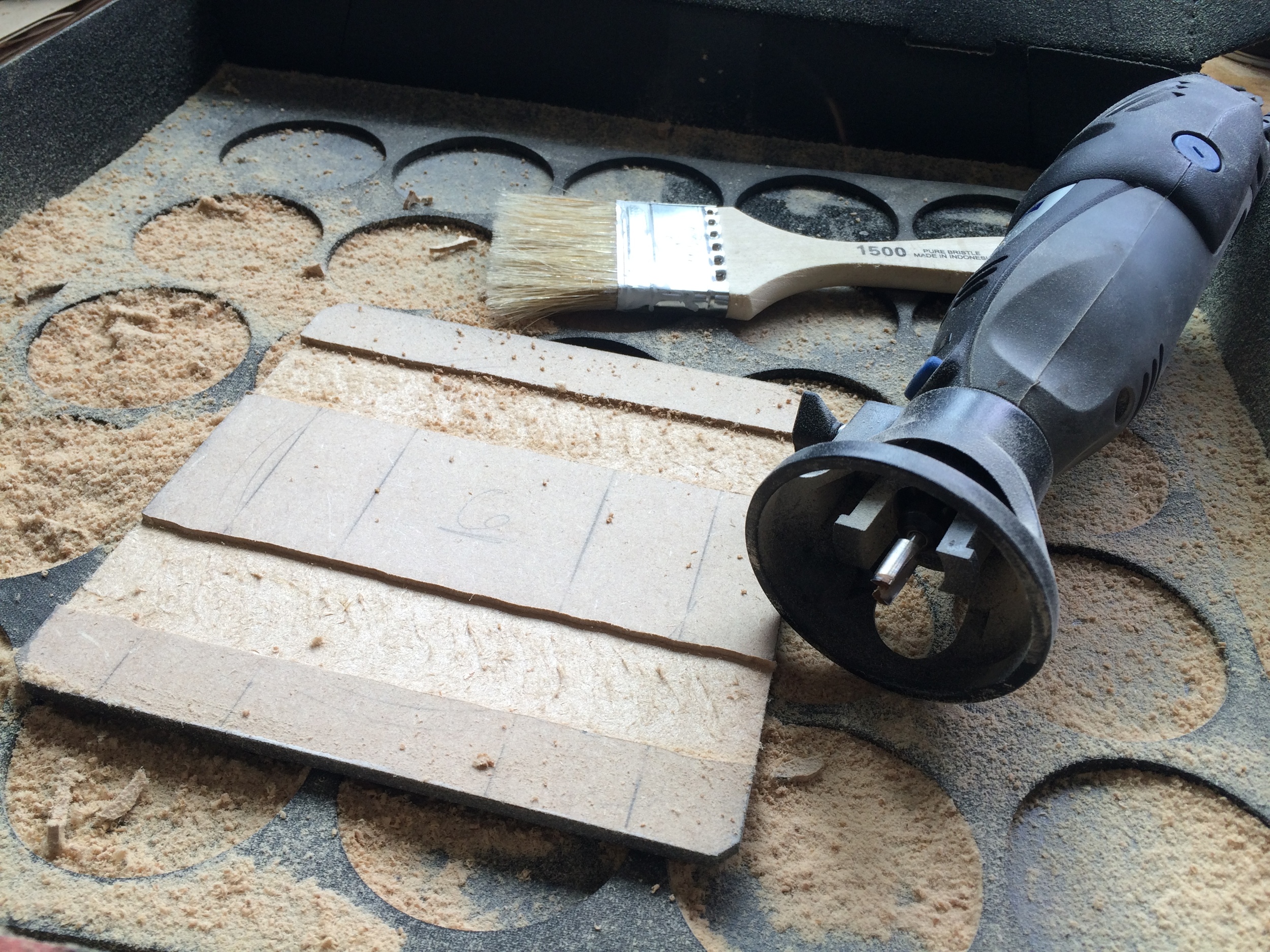



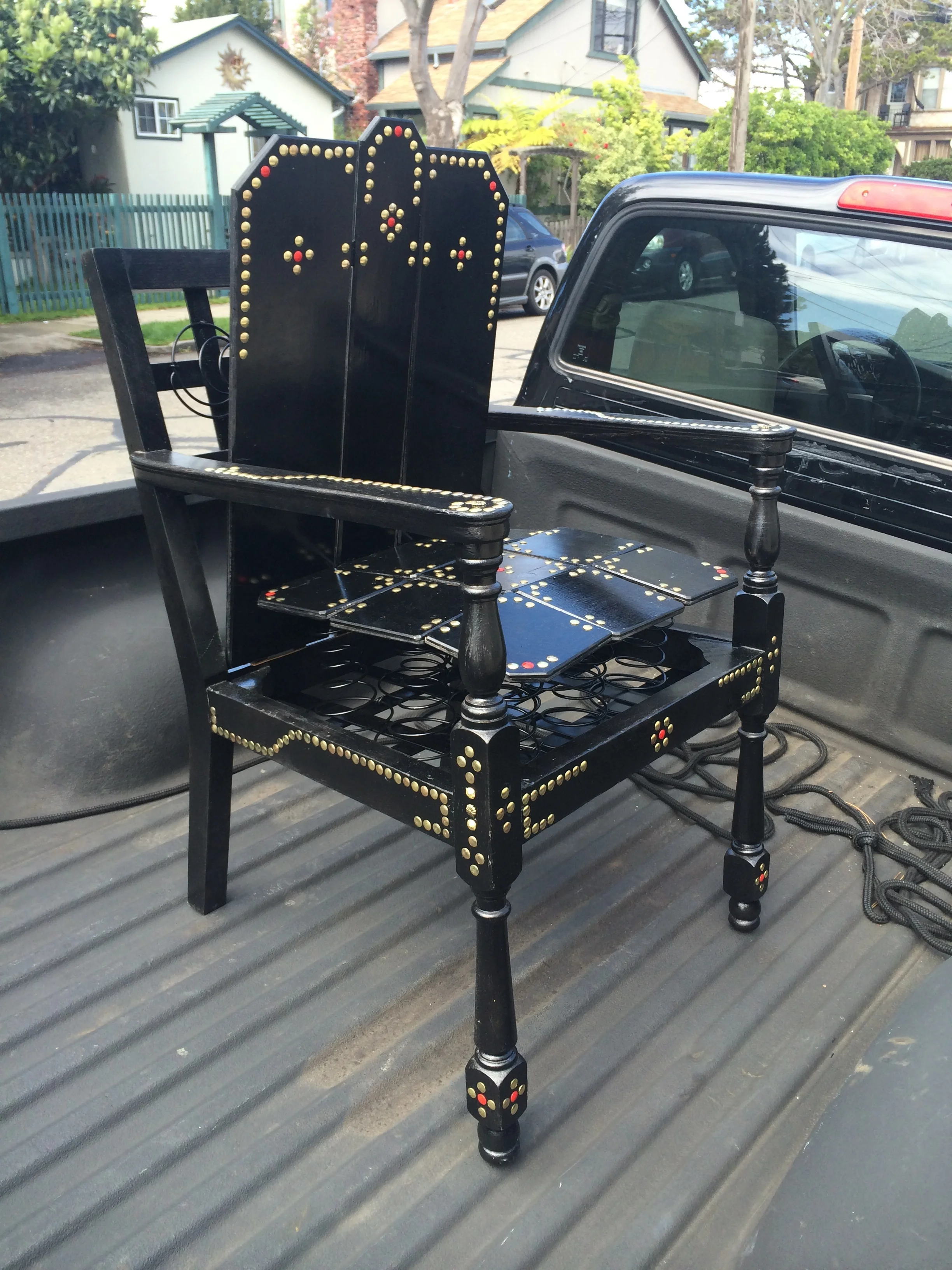


While at Academy of Art University, I was nominated to participate in the Revamp a Chair for Charity event hosted by Leftovers, a San Francisco furniture retailer specializing in salvaged furniture pieces.
The event included the work of 15 students from AAU who were all supplied with the matching chairs that were reclaimed from a local meeting hall. The chairs were in various states of disrepair and the students were encouraged to change the chair in whatever way they wanted so long as the chair retained its fundamental structure and functionality.
The chairs were made in the early 1960s and constructed using traditional methods of wood joinery for the frame, horse hair padding supported by springs for the seat, and finished with a green vinyl material that had not aged well.
I used this opportunity to explore design development through full scale mockups and the concept of achieving a comfortable seating surface without the use of materials that would easily degrade over time.
For my efforts, I was awarded 3rd place and the positive accolades of those in attendance. It was a proud moment to see the joyful expressions on people's face when they would first tentative sit down but soon be bouncing up and down like a sugared-up 5 year old. I have every intention of further developing this seating concept in the future.

The condition of my assigned chair was not as bad as I originally thought it might be. The padding on the seat was practically exhausted and the vinyl fabric covering the seat and backrest had become sticky with age and deterioration.

All non-structural elements were removed from the frame to examine the strength of the underlying construction and evaluate places to mount a new seat and backrest support.

The deteriorated horse hair and burlap pad, although traditional to chair construction at the time, was a foul thing the cut through and remove. It was only a matter of seconds before I had to wear a dust mask to protect myself from the decades of degradation and terrible smell of the worn-out material.

I wanted to maintain as much of the original structure as possible to preserve such a nice piece of mid-century woodworking. Since I only had one chair to work with, a full scale mockup was quickly assembled to match the original dimensions and allow me to modify the chair design without concern for compromising the original piece.

Originally, the assigned chair was meant to go around a conference table and seat its occupant in an upright position. The chair I was looking to create would stand on its own and would therefore need to be angled back to a more comfortable incline. By cutting off the back legs of the mockup and replacing them with a piece that could be clamped on, I was able to dial-in the appropriate angle of the seat as I developed the cushion elements.

I used the mockup to prototype the spring-supported backrest of the chair as a means to determine whether the concept itself was feasible and how comfortable the finished piece would be.

Never having used furniture springs in a piece before, I wasn't sure how much give the backrest would have and I was pleasantly surprised. The springs gave support to the seat's occupant and adjusted nicely as the occupant shifted their weight from side to side.

The seating surface needed to be rigid to mount to the top of the seat springs but flexible enough to move with the occupant and avoid pressure points.
Squares of 1/8" plywood were cut slightly larger than the top of the springs and connected together with heavy paper strips glued underneath. A 1/4" gap was left between the individual pads to allow them to move freely and flex to conform to the body of the occupant.

Initial tests showed that the method of using springs mounted to plywood pads provided enough support to fully suspend the occupant as well as being comfortable even when moving around. More springs were added to further support the seat.

With all measurements and angles adjusted to ensure comfort, the mockup proved to be an invaluable resource for exploring this novel method of providing support without the use of physically soft materials that would degrade over time. This information was carried over to the original chair frame and final construction was started.

Various methods of mounting the springs to the seat pads were explored. Ultimately these more complicated methods were abandoned due to the need to weld the springs to a metal support frame and not wanting to impede this process by attaching the MDF seat pad beforehand.

A metal frame was assembled that would be mounted onto the sides of the existing chair frame. Carefully, the springs were TIG welded into place in the most nerve-wracking part of the whole project.
The steel used in springs is a different density and chemical composition than the more common steel used in bar stock and so several springs were overheated and broke during this process. Thankfully, I had extras acquired from fellow contest participants.

The seat pads were made from two pieces of 1/4" MDF that would be connected to each other using 1" nylon straps. To ensure the two sides of the pad would glue together evenly, a dado was routed into the lower pads to receive the nylon strap.

The seat pad halves were fitted with cut nylon straps and epoxied into place. They were created as six sets of three connected pads that would have the strap direction crossed during final assembly to ensure strength in both directions.

The back supports would be mounted to the frame behind the seat via gate hinges routed to sit flush to the surface and then faced with another piece of MDF to conceal the hing itself. Gate hinges were used due to the long flange on one side that provide additional support to the backrest as it flexed.

After mounting the interwoven seat pads to the spring frame, the final seat cushion was created. Tacks were added to the pads to provide additional strength to the nylon straps buried within and this motif was continued throughout the piece.
The subtle curvature of the final seat was achieved by mounting the springs to the metal frame slightly toward the center of the seat pads. This slight curvature was created to be reminiscent of the upholstered form of the original seat and imply a sense of softness to the finished piece.

All elements were assembled to the original frame and the entire piece was painted with a glossy black to tie all elements together into a unified piece.

The chair was awarded third place by a panel of three industry professionals and a line quickly formed to try out the unique seating elements. With such a positive reaction to this novel seating experience, I was happy to take the chair home after the event and continue to develop the design.
